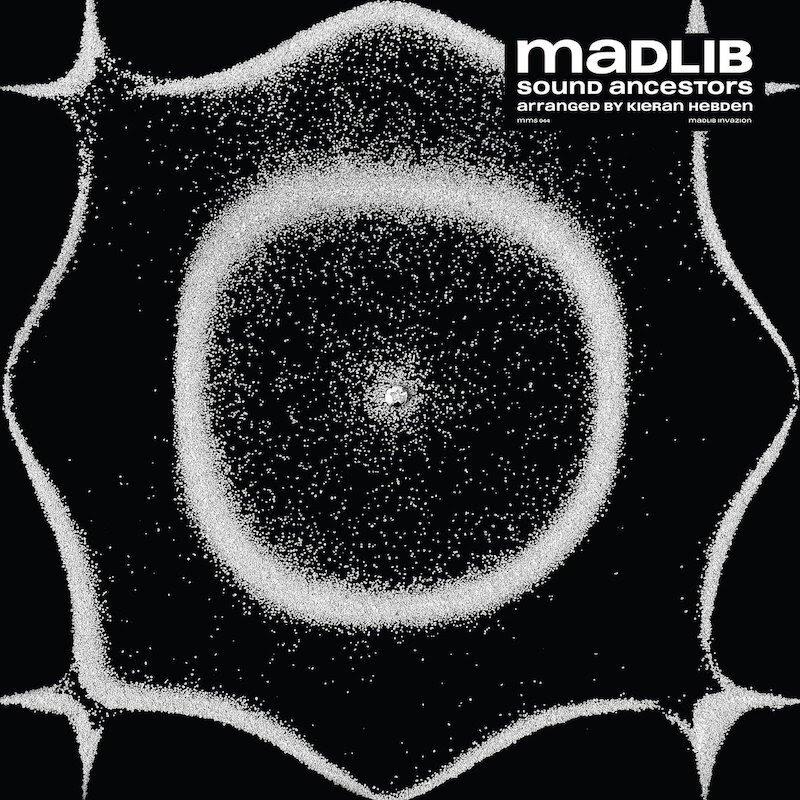Album Review: Madlib and Four Tet Reunite for ‘Sound Ancestors’
With more than a decade and a half of build-up, Madlib and Four Tet’s first collaborative project was finally released on Jan. 29, as the pair pay homage to their influences and lay claim to the Sound Ancestors title for years to come.
Written by Adithya Srinivas
Image courtesy of the New York Times
To say this album was a long time coming would be one hell of an understatement. Kieran Hebden (Four Tet) and Madlib’s names last appeared together on a full-length release way back in 2005, with Hebden’s essential remix album of the almost mythological Madvillainy. Perhaps the prospect of following up such a momentous project delayed this collaboration from happening sooner, or maybe the stars just took this long to align, but Sound Ancestors has finally arrived. In this 16-song, 41-minute effort, Madlib and Hebden put together a tight list of atmospheric, varied, and endlessly replayable tracks that certainly live up to the pair’s lofty standards.
The eagle-eyed might be quick to point out that this isn’t technically a collaboration — Hebden has credits for editing, arranging, and mastering while having none for writing or producing — but the Four Tet influence has an undeniable presence throughout the tracklist. With distant but crescendoing guitar, starry accents, arrhythmic percussion, and morphing synth lines, opener “There is No Time - Prelude” could have comfortably nestled inside either of Hebden’s 2020 releases, Sixteen Oceans and Parallel. A hard cut transition leads into what seems like a thoroughbred Madlib beat in “The Call,” which features basic snare and cymbal percussion, a simplistic yet hard-hitting and grungy bassline, and expertly cut vocal samples. But here too, Hebden’s flair peers through in the ethereal and haunting background of synths and shimmers, adding a layer of complexity to an otherwise in-your-face Madlib banger. The title track is another song wearing some Four Tet on its sleeve, featuring frantic Blue Man Group-esque PVC percussion over an eerie synth chord progression before abruptly transitioning into an upright bass and flute improvisation that’s complemented by cowbell and seemingly nonsensical cymbals amongst other miscellaneous percussion — chaos incarnate, but fun and entertaining nonetheless.
Image courtesy of Madlib Invazion
However, the majority of this album explains why it goes down as a Madlib solo effort. Madlib’s songwriting and production are as sharp as ever in the instrumental hip-hop core of this album. “Riddim Chant” and “The New Normal” are the standout tracks in this style, the former wielding a lowkey acoustic guitar beat, and the latter featuring a grimey yet melodic synth lead. “Theme De Crabtree” and “Chino” have all of the classic hip-hop vibes you’d expect from Madlib — effortlessly chill piano underneath laid back snares and hi-hats that just beckon for a freestyle. Thankfully, frequent Madlib collaborator Freddie Gibbs answered the call, recently posting a verse he put down over the foot-stomping, guitar-driven second half of “Hopprock,” and it only leaves you wishing there was more.
Mixed in with the hip-hop songs are a couple of vocal house tracks, which Madlib executes without breaking stride. “Road Of The Lonely Ones” has a lovely, harmonizing falsetto vocal sample over an understated bassline, as well as classic house snares and soft jazz guitar accents in a calming and downtrodden mix that is perfect for a lonely night. “Dirtknock” expands on these elements by turning an ‘80s post-punk vocal sample of Young Marble Giants’ “Searching For Mr. Right” into an introspective, deep house soundscape, a testament to Madlib’s production and sample-flipping skill.
Photo courtesy of Kieran Hebden
Madlib’s eccentric and remarkably borderless sampling prowess is on full display throughout the rest of the album as well, whether it be Caribbean radio station DJ tags on “Theme De Crabtree,” a Busta Rhymes verse on “One for Quartabê / Right Now,” or ‘70s rock group The Persuaders on “Two for 2 - For Dilla.” The most memorable sample is on the final track, “Duumbiyay,” which features a group of six young African-American boys playing homemade instruments. Jovial and innocent, the sample, originally recorded in 1955, is layered over Madlib’s piano and jazz drum additions to create an exciting and upbeat album closer.
Sound Ancestors, as the name suggests, is a tribute to those that came before. Madlib and Hebden weave the sounds of old school underground hip-hop, classic house, and pioneering electronica into a new era, proving just how timeless those genres are. Each individual track’s sonic ideas are succinct and never overstay their welcome, but the variation from one song to the next keeps the whole album fresh, inviting repeat listens. Here, Madlib only adds to his legacy as one of history’s premier hip-hop producers, and Hebden leaves his own indelible mark in support. However, this project also represents something of a redundant self-coronation for Madlib and Four Tet. These are two artists who, over at least three decades, have amassed discographies that speak for themselves: bodies of work that are widely recognized as legendary. Even so, they lay down one more reminder to every producer that will follow them: remember who your Sound Ancestors are.



